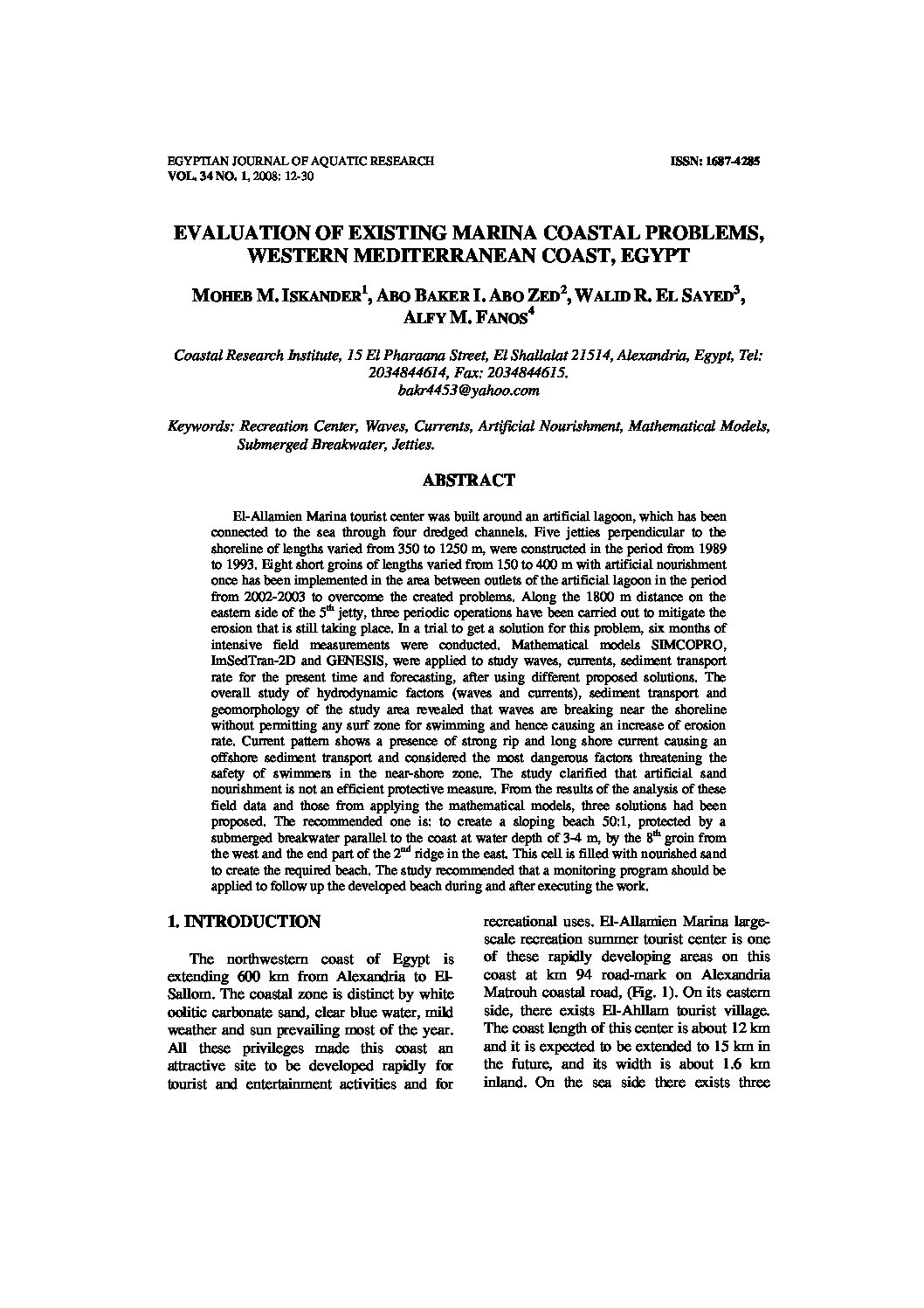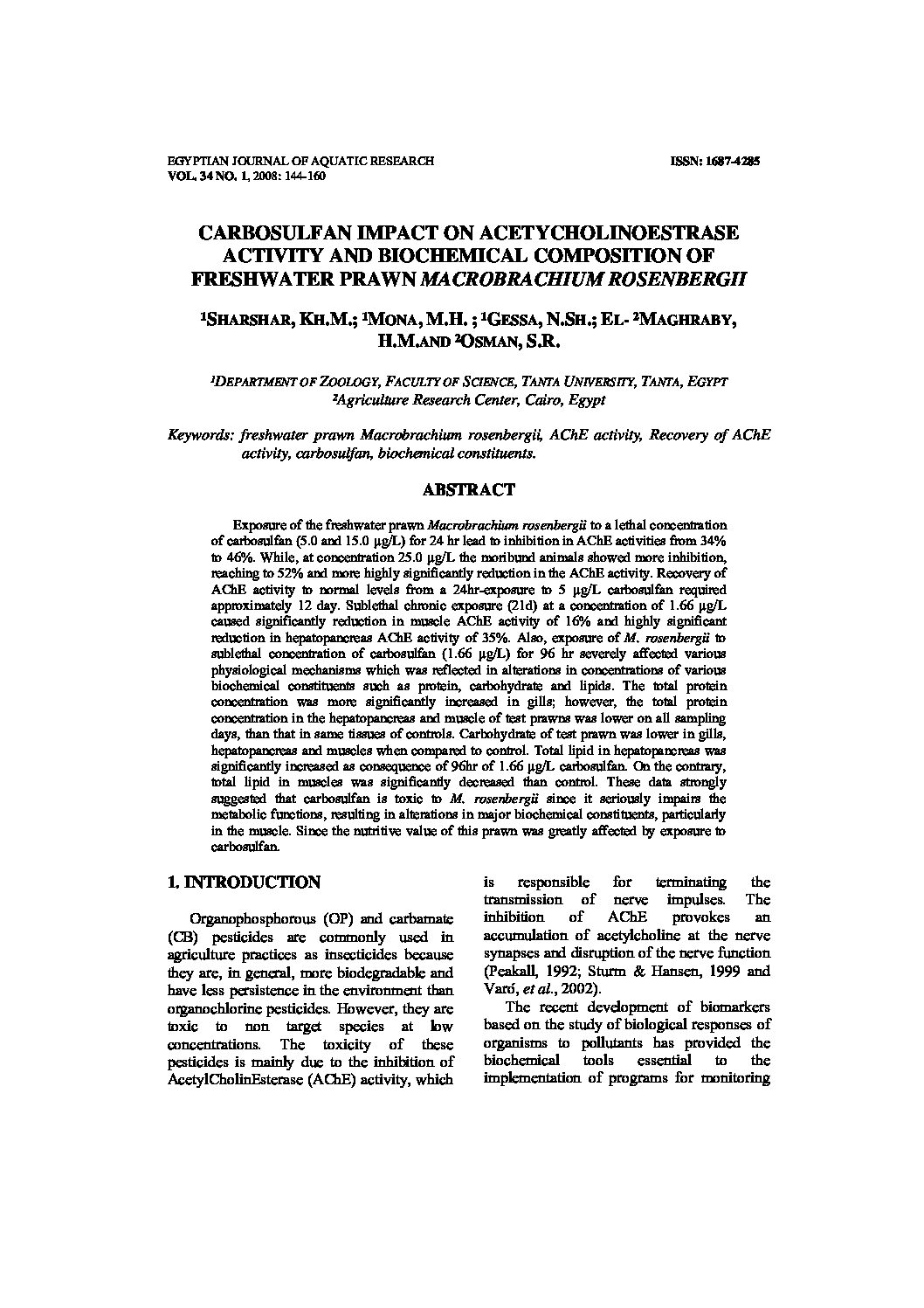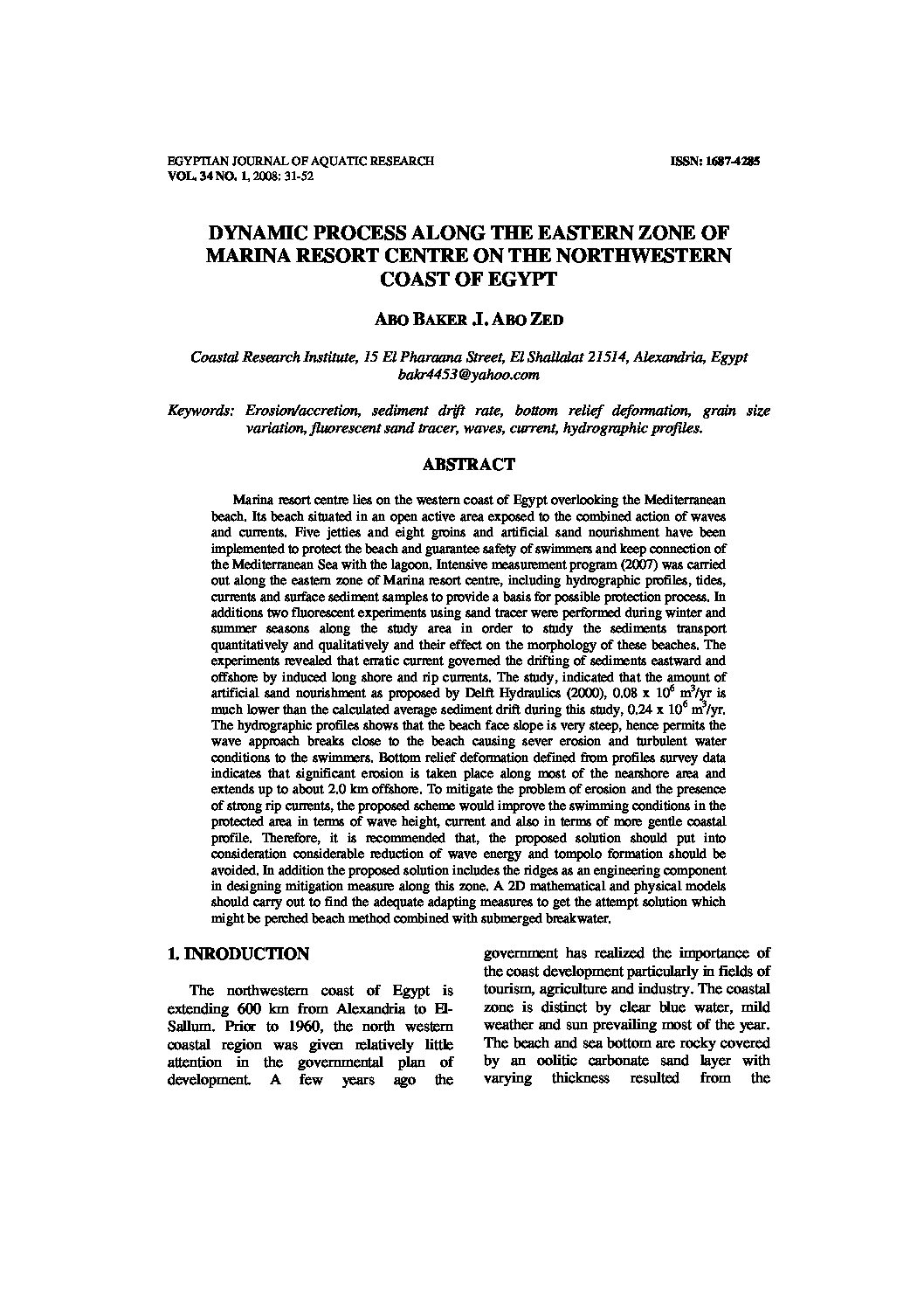Categories
vol-34EVALUATION OF EXISTING MARINA COASTAL PROBLEMS,
WESTERN MEDITERRANEAN COAST, EGYPT
MOHEB M. ISKANDER1
, ABO BAKER I. ABO ZED2
, WALID R. EL SAYED3
,
ALFY M. FANOS4
Coastal Research Institute, 15 El Pharaana Street, El Shallalat 21514, Alexandria, Egypt, Tel:
2034844614, Fax: 2034844615.
[email protected]
Keywords: Recreation Center, Waves, Currents, Artificial Nourishment, Mathematical Models,
Submerged Breakwater, Jetties.
ABSTRACT
El-Allamien Marina tourist center was built around an artificial lagoon, which has been
connected to the sea through four dredged channels. Five jetties perpendicular to the
shoreline of lengths varied from 350 to 1250 m, were constructed in the period from 1989
to 1993. Eight short groins of lengths varied from 150 to 400 m with artificial nourishment
once has been implemented in the area between outlets of the artificial lagoon in the period
from 2002-2003 to overcome the created problems. Along the 1800 m distance on the
eastern side of the 5th jetty, three periodic operations have been carried out to mitigate the
erosion that is still taking place. In a trial to get a solution for this problem, six months of
intensive field measurements were conducted. Mathematical models SIMCOPRO,
ImSedTran-2D and GENESIS, were applied to study waves, currents, sediment transport
rate for the present time and forecasting, after using different proposed solutions. The
overall study of hydrodynamic factors (waves and currents), sediment transport and
geomorphology of the study area revealed that waves are breaking near the shoreline
without permitting any surf zone for swimming and hence causing an increase of erosion
rate. Current pattern shows a presence of strong rip and long shore current causing an
offshore sediment transport and considered the most dangerous factors threatening the
safety of swimmers in the near-shore zone. The study clarified that artificial sand
nourishment is not an efficient protective measure. From the results of the analysis of these
field data and those from applying the mathematical models, three solutions had been
proposed. The recommended one is: to create a sloping beach 50:1, protected by a
submerged breakwater parallel to the coast at water depth of 3-4 m, by the 8th groin from
the west and the end part of the 2nd ridge in the east. This cell is filled with nourished sand
to create the required beach. The study recommended that a monitoring program should be
applied to follow up the developed beach during and after executing the work.







